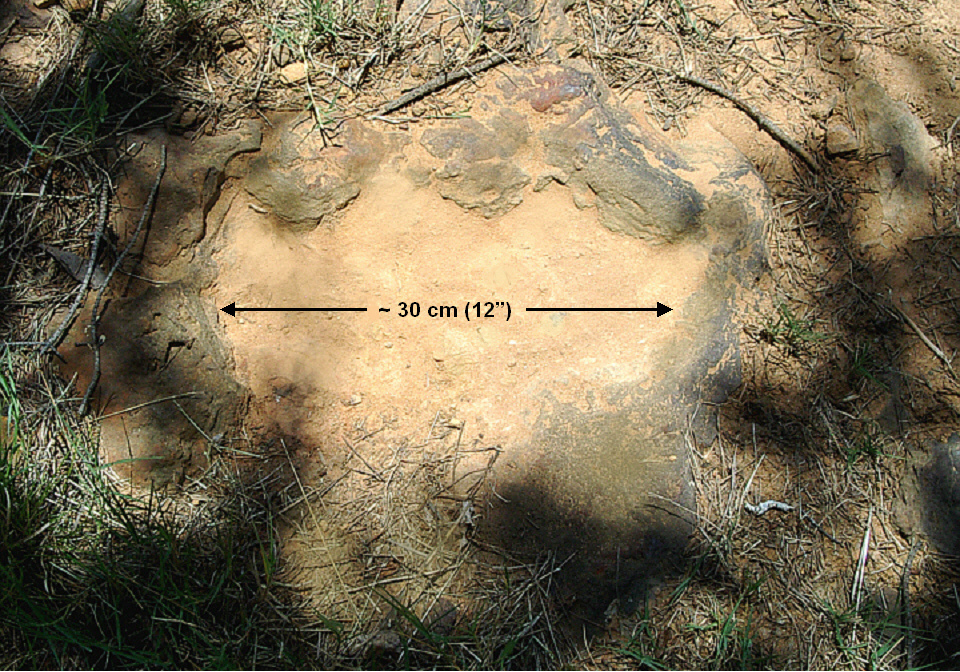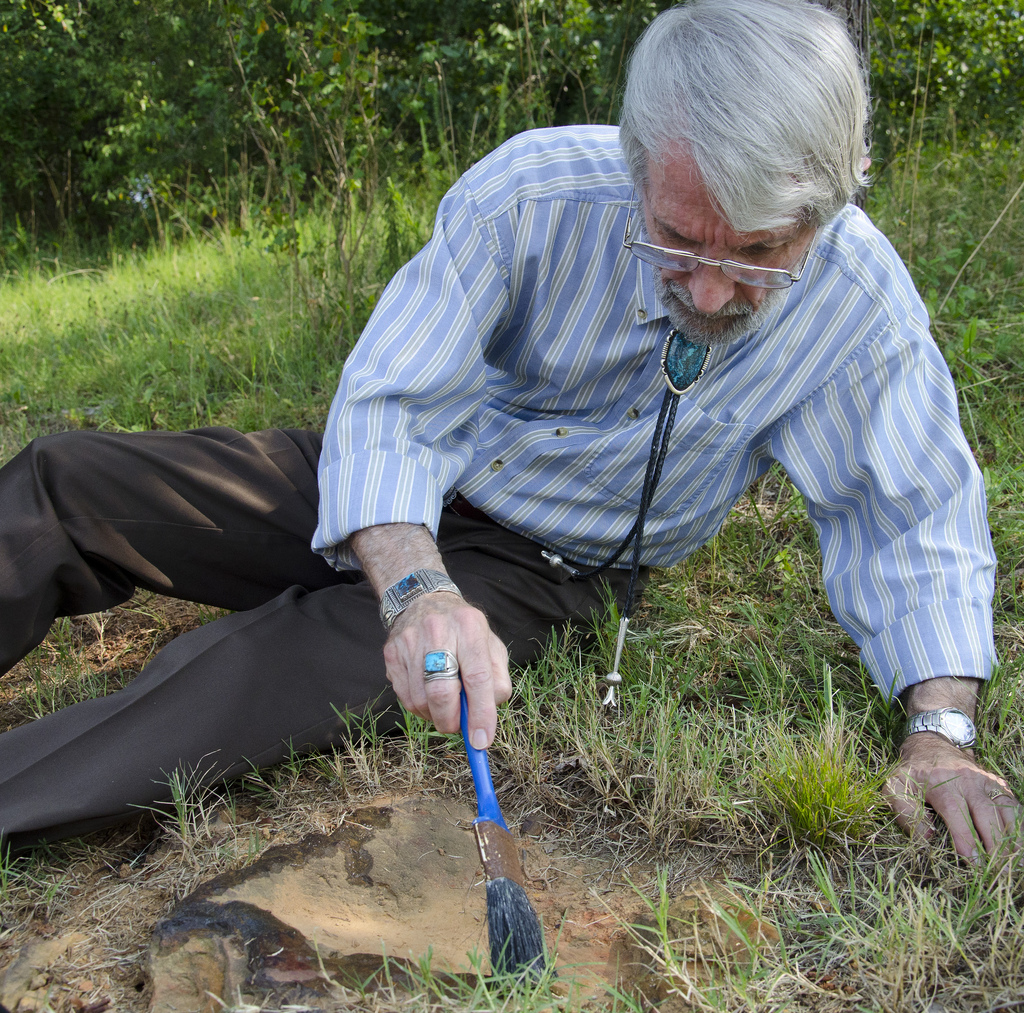NASA Finds Spiny Dinosaur Prints in Own Backyard

At NASA's Goddard Space Flight Center in Maryland, some of the most brilliant minds in the world work to build the spacecraft that humans use to explore their universe. But where space scientists now roam, dinosaurs used to call home, according to dino-hunter Ray Stanford.
Stanford has discovered the footprint of a lumbering, spiny dinosaur called a nodosaur in NASA's own backyard on the Goddard Space Flight Center campus. NASA officials aren't disclosing the precise location of the print, fearing that someone might damage or try to remove the fossilized track.
The dinner-plate-sized footprint bears the mark of four dino toes. It belongs to a nodosaur, a tank-like, armored beast studded with bony protuberances that roamed the area about 110 million years ago during the Cretaceous period, which lasted from about 125 million to 65 million years ago. Nodosaurs were plant-eaters, and this one appeared to be moving quickly across the Cretaceous mud, as its heel did not sink deeply into the ground. [See Images of the Ancient Dino-Print]

Stanford, an amateur paleontologist who has had several papers published, confirmed his find with Johns Hopkins University dinosaur expert David Weishampel. On Aug. 17, Stanford shared the location of the find with Goddard officials and with Washington Post reporter Brian Vastag, who made the discovery public the same day.
Stanford also found several smaller dinosaur footprints in the area, likely from meat-eating theropods. He called the location "poetic."
"Space scientists may walk along here, and they're walking exactly where this big, bungling heavy-armored dinosaur walked, maybe 110 to 112-million years ago," Stanford told Goddard officials.
Maryland is no spring chicken when it comes to dinosaur fossils; in fact, the corridor between Washington, D.C., and Baltimore, Md., is known as "Dinosaur Alley," because so many of the beasts' fossils were discovered during iron mining in the 18th and 19th centuries, according to Weishampel. "Today, Maryland remains the only source of Early Cretaceous dinosaur fossils on the East Coast," he wrote in a 1996 article for Johns Hopkins University magazine.
Get the Space.com Newsletter
Breaking space news, the latest updates on rocket launches, skywatching events and more!
This story was provided by LiveScience, a sister site to SPACE.com. Follow Stephanie Pappas on Twitter @sipappas or LiveScience @livescience. We're also on Facebook & Google+.
Join our Space Forums to keep talking space on the latest missions, night sky and more! And if you have a news tip, correction or comment, let us know at: community@space.com.

Stephanie Pappas is a contributing writer for Space.com sister site Live Science, covering topics ranging from geoscience to archaeology to the human brain and behavior. She was previously a senior writer for Live Science but is now a freelancer based in Denver, Colorado, and regularly contributes to Scientific American and The Monitor, the monthly magazine of the American Psychological Association. Stephanie received a bachelor's degree in psychology from the University of South Carolina and a graduate certificate in science communication from the University of California, Santa Cruz.










